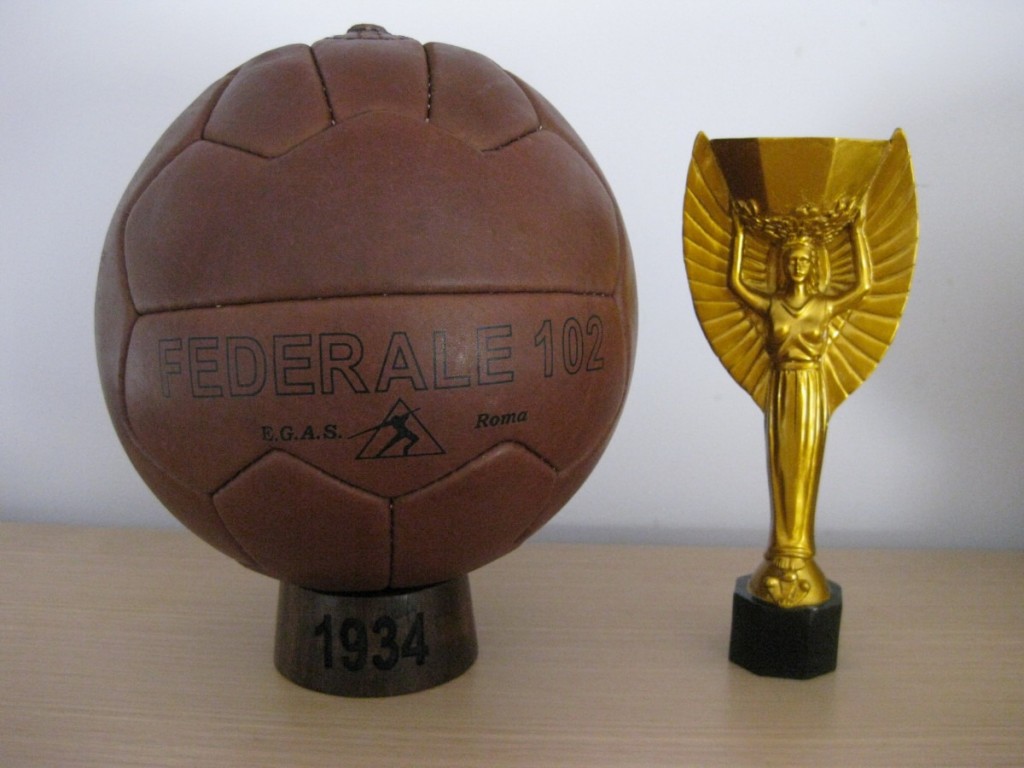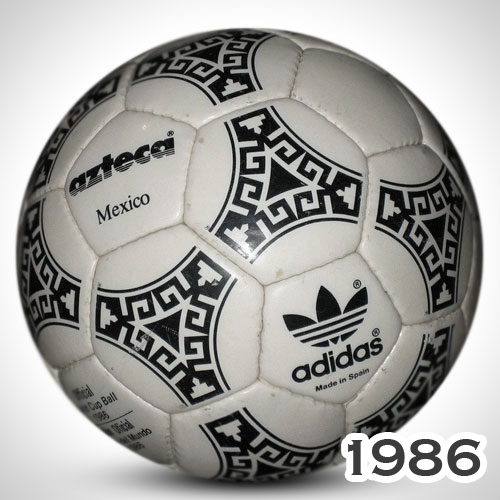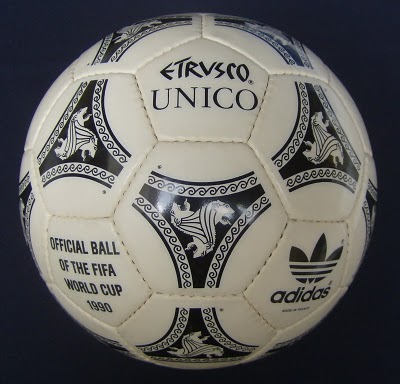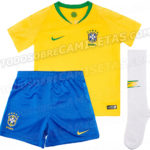Brazuca será el balón del Mundial de Brasil 2014

Adidas no ha dado a conocer el balón con el que se disputará la próxima Copa del Mundo de Brasil pero ya se conoce con máxima seguridad cómo se llamará y cómo será. El nombre elegido por mayoría de votos populares será el de «Brazuca», un gentilicio coloquial con el que se autodenominan los ciudadanos brasileños.
El esférico será blanco con toques negros, rojos, verdes y azules y permitirá recoger todos los efectos de los lanzadores de faltas y tiros de larga distancia. Complicado de detener para los porteros, está pensado para premiar el juego alegre y ofensivo y disparar la cifra de goles. De esta forma, sigue el ejemplo del anterior Jabulani.

La evolución de las pelotas de los mundiales ha cambiado mucho en estos 83 años de historia de la Copa del Mundo. Desde aquellos balones duros en los que golpear el balón era casi una odisea se ha pasado a una dinámica donde chutar el curso se ha convertido en un ejercicio de tacto y suavidad. Y si no miren, la evolución de los distintos balones de los Mundiales pasando desde el famoso Etrusco hasta el ya olvidado Fevernova. La lista no tiene desperdicio, empezando por Uruguay 1930:
Mundial de 1930:
Estos fueron los dos balones de cuero utilizados para la final. El de la izquierda corresponde al que usó Argentina. El de la derecha, el modelo T es el que usaron la mayor parte de equipos, entre ellos, Argentina. Y es que la rivalidad entre ambos equipos era tal que cada uno eligió un cuero diferente para desestabilizar al rival.
Mundial de 1934:
El Modelo Federale fue el balón de cuero utilizado para disputar el Mundial de 1934, un campeonato donde Italia nacionalizó hasta cinco sudamericanos para potenciar el equipo y alzar la Copa de la derecha.
Mundial de 1938:
Se utilizó el primer balón con válvula de invención argentina. Además, fue el primer Mundial donde los jugadores llevaron números en sus camisetas.
Se utilizó el balón de tiento en el Mundial de 1950. En Europa, ya se empezaba a experimentar con balones de plástico.
Mundial de 1954:
El balón del Mundial de 1954 fue amarillo y llevaba el logo con la bandera suiza.
En el Mundial 58, los balones era de color marrón o amarillo. En los encuentros de lluvia, el color utilizado era el amarillo.
Crack fue la pelota usada en el Mundial 62. Había sido utilizada durante 18 años en el campeonato nacional de Chile. Problemas con la presión y las descoseduras hizo que en algunos encuentros se sustituyera por otras más consistentes.
Mundial de 1966:
El balón Challenge fue la pelota oficial del Mundial de 1966. Había tres modelos: en blanco, naranja y amarillo, siendo el segundo el más usado. Fue el último Mundial sin utilizarse la marca Adidas. Volvieron los gajos rectangulares de color naranja, amarillo y blanco; se fabricaron 300 balones para el Mundial y fue un éxito en ventas.
Mundial de 1970:
De cuero y con 32 gajos poligonales blancos y negros cosidos a mano, marcó el modelo de los balones actuales y supuso el inicio del fútbol moderno, por llamarlo de alguna manera, en cuanto a materiales utilizados. Además, fue el primer balón manufacturado por una marca comercial (Adidas), proveedor exclusivo del Mundial, que ha continuado de proveedor en todas las ediciones hasta la actualidad.
Por primera vez se copió el modelo del campeonato anterior. Para ello, mantuvo la forma y estética y cambiando tan sólo el color de las letras impresas de dorado a negro. Los hexágonos seguían siendo blancos y los pentágonos, negros
Mundial de 1978:
En 1978, el diseño futbolístico experimentó una nueva revolución con la presentación del Tango en obvia alusión a la música popular argentina. Las veinte piezas con ‘tríadas’ creaban la ilusión óptica de que había 12 círculos idénticos.
Mundial de 1982:
El diseño inicial del Tango de 1978 sólo se alteró ligeramente en 1982, aunque el Tango España contaba con una innovación tecnológica muy importante. Seguía estando hecho de cuero, pero presentaba unas revolucionarias costuras impermeables, lo que reducía considerablemente la absorción de agua y, por tanto, reducía al mínimo el aumento de peso del balón durante el partido en caso de lluvia. Sin duda, un modelo revolucionario.
Mundial de 1986:
El adidas Azteca fue el nombre empleado en honor a los indígenas de ese país, que sin embargo, fue la sede después de la renuncia de Colombia. Fue el primer balón oficial sintético de la Copa Mundial de la FIFA. La utilización de material sintético aumentó la durabilidad y redujo aún más la absorción de agua.
Mundial de 1990:
Para muchas personas el mejor balón de futbol de todos los tiempos, y desde luego uno de los mas cotizados. ¿Quién no ha jugado con el de pequeño en un parque? Posiblemente, cualquier compañero de clase lo adoraba. Tenía un tacto excelente y aunque era duro, era muy manejable. Ademas este balón es el único de todos los balones que fue utilizado en un mundial (1990), una eurocopa (1992)y unos juegos olimpicos (1992), por supuesto también se jugaron en las mejores ligas del mundo con esta joya.
Mundial de 1994:
El modelo Questra forma parte de la familia «Questra» que está compuesta por 4 balones oficiales: El propio «Questra» utilizado en el mundial de Estados Unidos en 1994, el «Questra Europa» utilizado en la Eurocopa de 1996, el modelo «Questra Olympia» que se empleó en los Juegos Olímpicos de Atlanta en 1996 y por ultimo el «Questra Apollo» del que se fabricaron 1000 unidades con el logotipo de la «Real Federación de Fútbol de España» y no se utilizó para ninguna de las anteriores competiciones.
Mundial de 1998:
En 1998, cambiaron muchas cosas en la fabricación de los balones para la máxima competición, por ejemplo el logotipo de Adidas se sustituyó por uno mas actual y moderno. A Zidane no pareció importarle mucho. Francia ganó su Mundial.
Mundial de 2002:
Otro clásico. El Fevernova fue el primer balón oficial del Mundial que se alejó del diseño tradicional imperante desde la aparición del Tango en 1978. Su aspecto llamativo y el empleo del color se basaban íntegramente en las culturas asiáticas.
Mundial de 2006:
El balón oficial de Alemania 2006 se presentó en Leipzig durante el sorteo final de la competición. Su nombre: Adidas +Teamgeist, un término que en alemán hace referencia a la característica decisiva que toda selección necesita para poder hacerse con el trofeo dorado: el espíritu de equipo.
Mundial de 2010:
IsiZulu es un lenguaje que habla el 25% de la población en Sudáfrica y en ese dialecto se nombró al balón Jabulani que significa celebrar en esa curiosa lengua. En la pelota se puede ver los diseños del estadio donde Andrés Iniesta dio la mayor de las glorias a España.




























